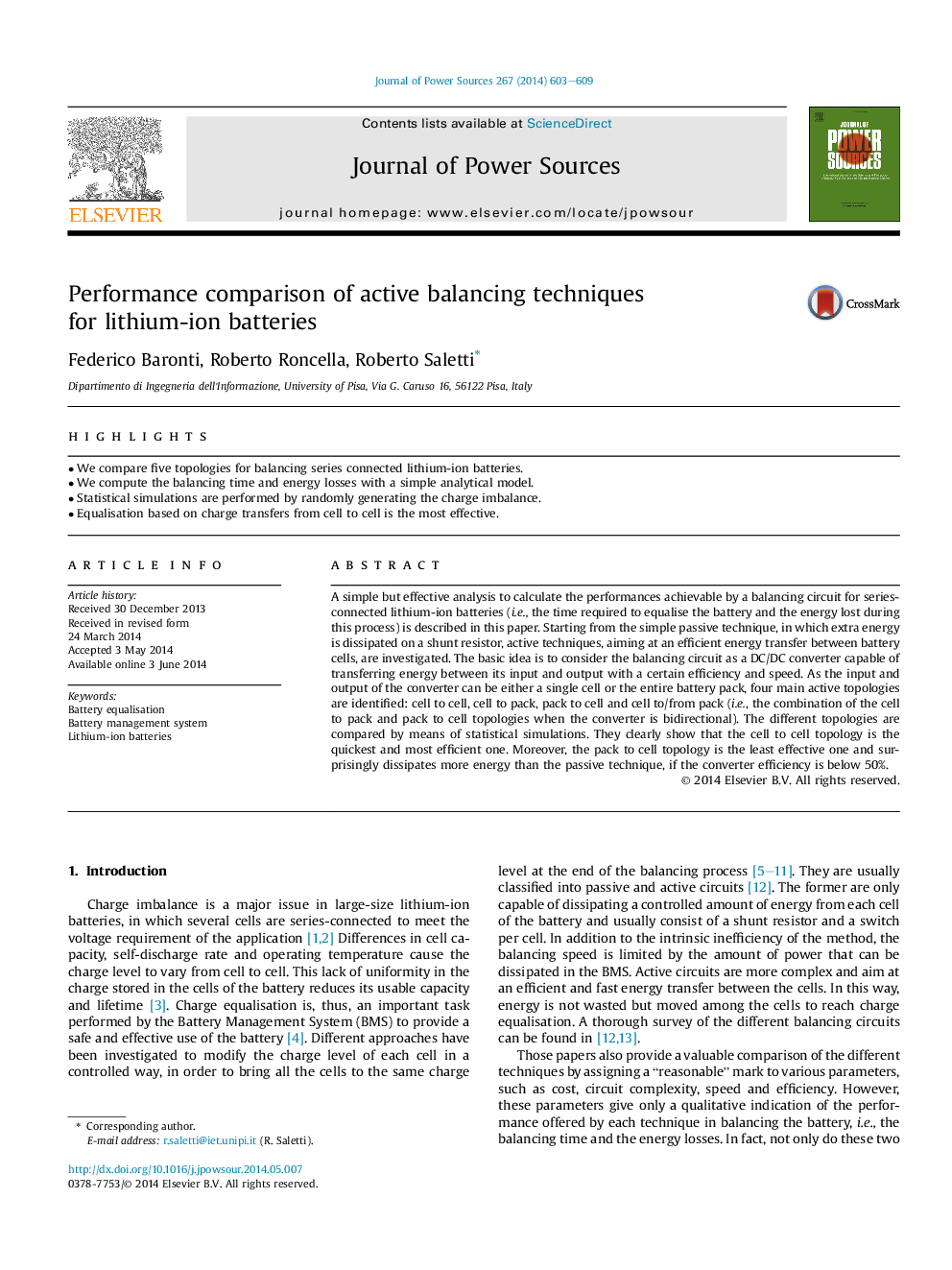| Article ID | Journal | Published Year | Pages | File Type |
|---|---|---|---|---|
| 1286642 | Journal of Power Sources | 2014 | 7 Pages |
•We compare five topologies for balancing series connected lithium-ion batteries.•We compute the balancing time and energy losses with a simple analytical model.•Statistical simulations are performed by randomly generating the charge imbalance.•Equalisation based on charge transfers from cell to cell is the most effective.
A simple but effective analysis to calculate the performances achievable by a balancing circuit for series-connected lithium-ion batteries (i.e., the time required to equalise the battery and the energy lost during this process) is described in this paper. Starting from the simple passive technique, in which extra energy is dissipated on a shunt resistor, active techniques, aiming at an efficient energy transfer between battery cells, are investigated. The basic idea is to consider the balancing circuit as a DC/DC converter capable of transferring energy between its input and output with a certain efficiency and speed. As the input and output of the converter can be either a single cell or the entire battery pack, four main active topologies are identified: cell to cell, cell to pack, pack to cell and cell to/from pack (i.e., the combination of the cell to pack and pack to cell topologies when the converter is bidirectional). The different topologies are compared by means of statistical simulations. They clearly show that the cell to cell topology is the quickest and most efficient one. Moreover, the pack to cell topology is the least effective one and surprisingly dissipates more energy than the passive technique, if the converter efficiency is below 50%.
